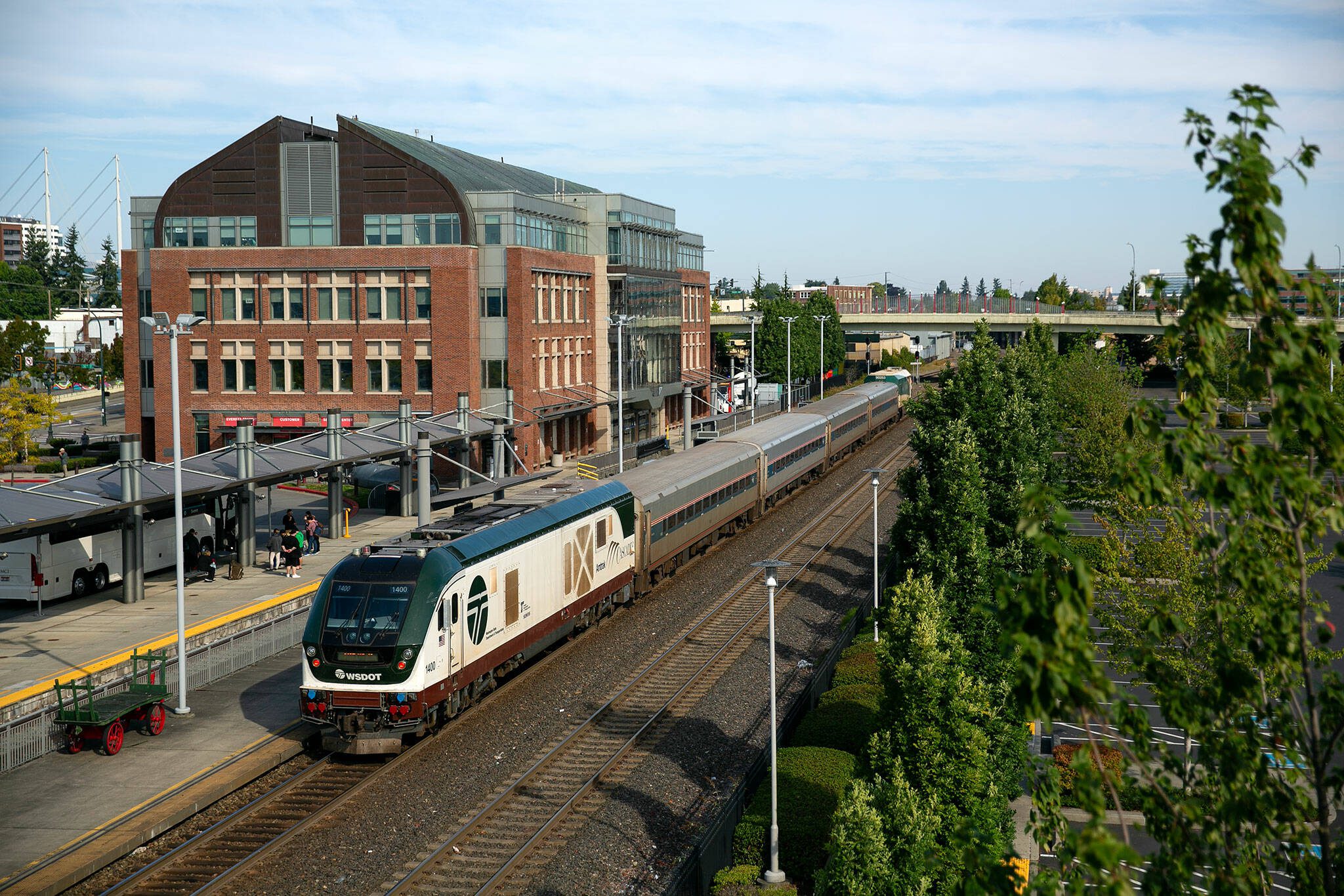By The Herald Editorial Board
The decision last week from the Federal Railroad Administration — to sidetrack a funding request for further study of an “ultra-high speed” rail line from Vancouver, B.C. to Portland, Ore., via Everett, Seattle and Olympia — should signal state leaders to switch tracks to a plan that would refurbish the current north-south Amtrak Cascades line, while still significantly cutting travel times between cities and seeing completion possibly decades earlier.
In handing out more than $8 billion to projects nationwide — including other ultra-high speed rail projects in California and Nevada — the railroad agency rejected a request for nearly $200 million in funding that would have allowed advanced planning for the 300-mile-long line served by “bullet” trains capable of speeds of 220 to 250 mph, allowing a timetable of 30 runs a day and serving 2.1 million riders when service was to start in 2035 and 3.3 million by 2055.
The state in the $16.8 billion transportation budget it passed in 2022, put down its own earnest money of $150 million for what was dubbed the “Cascadia” line, seeking as much as $600 million to $700 million in federal matching funds for study of the ultra-high speed line — separate from the tracks used by freight and Amtrak passenger trains — work that would include route planning, environmental reviews, engineering and community outreach.
Instead, Washington and Oregon received rail-development grants of $500,000 each, one to provide planning for improvements to the Amtrak Cascades line over the next 20 years, and a second for a potential rail corridor extension for the Cascadia bullet train to Eugene, Ore, keeping some hope going that Cascadia remained a possibility, as reported last week by the Washington State Standard.
Cascadia’s ultra-high speed trains promise travel times of about an hour between Portland and Seattle and Seattle and Vancouver, B.C., compared to the current 79-mph Amtrak Cascades’ travel times of some three-and-a-half hours between those cities. But increasing cost estimates for Cascadia, which would require significant right-of-way acquisition for its separate line as well as construction of bridges and some 90 miles of tunnels, has jumped from a 2018 project cost estimate of between $24 billion and $42 billion to a recent estimate of between $70 billion and $150 billion, in an independent report to the state Legislature’s Joint Transportation Committee.
For comparison, the 500-mile ultra-high speed rail line now under construction between Los Angeles and San Francisco — over-budget and behind schedule — was earlier this year estimated by its state agency to require a total cost between $88 billion and $128 billion. The Federal Railroad Administration last week provided an infusion of $3.07 billion for that project.
Seizing on last week’s news, a coalition of transportation and environmental groups, calling itself Solutionary Rail, is seeking support for a long-range plan to outfit the Amtrak Cascades rail line for higher-speed electric trains, similar to the Acela trains common on the East Coast that can reach speeds of more than 110 mph.
Among its leaders, Thomas White, a rail industry consultant, and Bill Moyer, a rail advocate have advocated for upgrading the existing rail line between Vancouver, B.C., and Portland, by electrifying it, reducing curves and adding sections of a third track that would reduce conflicts between passenger trains and BNSF freight trains. (BNSF owns and manages the tracks on which Amtrak and other passenger rail operates.) While half the speed of a bullet train, an accelerated Amtrak could cut travel times to 2 ½ hours between Seattle and Portland with 14 trips a day; and to 2 ¾ hours between Seattle and Vancouver with five daily trips, while at the same time providing service to 14 communities, compared to Cascadia’s three to seven stops.
Solutionary Rail outlined the upgraded Amtrak Cascades’ advantages in a letter to U.S. Secretary of Transportation Pete Buttigieg and the FRA’s administrator Amit Bose, seeking denial of funds to the Cascadia project and consideration of the Amtrak Cascades’ route.
“We all want more rail, but the ‘ultra’ project will not help us achieve crucial climate, environmental, and mobility justice goals in a timeframe that matters,” the letter reads.
Solutionary Rail doubts that the Cascadia route could be completed by the promised 2035 target. Completion by a more likely 2050, the letter says, would mean delay of an important tool in significantly reducing transportation climate emissions in the state.
Considerable planning and study for upgrades to the Amtrak Cascades line were completed in 2006, “a seven-volume document of phased projects that maps a pathway to delivering Acela-like Amtrak service to the Cascades corridor; far more cheaply and in a fraction of the time the fraught ultra-high speed rail project would take.” That plan, say supporters, only needs to be updated to be made “shovel-ready” and eligible for grants.
A first step toward dusting off and updating the Amtrak Cascades plan would be in the Legislature’s reinvestment of at least some of $150 million it put down to attract the railroad grants for the Cascadia line. State Sen. Marko Liias, D-Edmonds, told the Standard that $50 million will still be needed for rail corridor planning, and there are ample and necessary projects for pedestrian and cyclist safety that could benefit.
Yet, a refurbished and electrified Amtrak Cascades line could — in as little as a decade — bring improved travel times with vastly reduced carbon emissions for significantly less than even the low end of Cascadia’s estimated cost.
Let’s get going; we’ve got a train to catch.
Talk to us
> Give us your news tips.
> Send us a letter to the editor.
> More Herald contact information.


























